More actions
No edit summary |
No edit summary |
||
| Line 51: | Line 51: | ||
* The second Rank-Up (to Knight-Captain) is granted if the Character fully portrays the entire Code of their Order and enforces it uniformly in all situations. | * The second Rank-Up (to Knight-Captain) is granted if the Character fully portrays the entire Code of their Order and enforces it uniformly in all situations. | ||
* The third Rank-Up (to Knight-Major) is granted if the Player regularly generates independent Lore-Canon Event and Story content for their Order as a Player DM. | * The third Rank-Up (to Knight-Major) is granted if the Player regularly generates independent Lore-Canon Event and Story content for their Order as a Player DM. | ||
* The fourth Rank-Up (to Paladin) is granted if the Character achieves a notable Policy victory for the Order that is reflected in Lore, such as political defeat of a rival Order. | * The fourth Rank-Up (to Paladin) is granted if the Character achieves a notable Policy victory for the Order that is reflected in Lore, such as significant political defeat of a rival Order. | ||
For every Rank-Up, the Player may choose one of the following Privileges for their Character: | For every Rank-Up, the Player may choose one of the following Privileges for their Character: | ||
* Privilege 1 grants the Knight Character a rent-free Estate that is about the size of 2x Rental Houses that World Staff will do interior for, if it is requested. | * Privilege 1 grants the Knight Character a rent-free Estate that is about the size of 2x Rental Houses that World Staff will do interior for, if it is requested. | ||
Revision as of 22:32, 16 September 2024
| Expanded Knights Lore | |
|---|---|
| Part of Knights lore. |
Knighthood, while mostly an Ailor concept, exists across the world of Aloria in different forms. While Knighthood offers unique experiences and status, its believability must be preserved, and so the lore around it is fairly strict. Knights are divided into Orders that share an oath and a purpose, with each Order further subdivided into more specialized Chapters. Knighthood is a very good way to get involved in pre-existing groups and activities, guaranteeing people to connect to and a reason to log on. Knighthood also grants a unique rank system for Characters to progress up the ladder of their Order and gain privileges for being honest to their Code and effective at enforcing it. Knight roleplay does require reading, however, as Knight Characters must follow their Codes or risk expulsion. For a less combat oriented approach to the concept of social groups, consider reading Guilds, which provide a form of membership with perks. For a less committed version of Guilds, please read Societies, which are meant merely to give players reasons to interact with each other, but have no additional obligations.
Becoming a Knight
Becoming a Knight can either be done as backstory, or In-Character. Knighthood is a commitment from the player to invest in the lore and activities around Knighthood, pre-determining allies and enemies, and coming with some accountability. Most Knights are trained from youth, becoming Squires at the age of 13 and graduating as Rank-Knights at the age of 21. A Character can also be created as an 18-20 year old Squire, who is advanced in their training, but not all the way graduated yet. Non-Knight Characters can also be recruited In-Character as adult Squires and trained to become full Knights. While technically Knights should spend at least 8 years training, for the sake of availability of Roleplay, the minimum requirement for an In-Character recruited Squire to become a Knight is 3 months of dedicated play (meaning, not switching to other Characters, or shelving for that period). At the end of this period, a Ticket may be made to Lore Staff to assess whether the Character would pass evaluation by the Order.
Designing a Knight
Knights should be designed in line with the fantasy imagining of a Knight, the quintessential fighter on horseback with a lance or sword or shield, wearing heavy armor. It is important that Knights don't become rogues who fight with daggers, or become too far removed from the pop culture understanding of what a Knight is. Players should gravitate towards this design: using melee weapons and/or shields, favoring chainmail or heavy armor, and appealing to class, dignity, or having a formal grace as is becoming of someone who is treated as pseudo aristocracy and supposedly one of the finest warriors in the Empire. Being on horseback is optional, since Mounts are a for-purchase-feature in Roleplay. For further design ideas, refer to the individual Order pages.
Knight Orders
Knighthood is split between a variety of Orders which all represent some kind of central theme or thought. Below are listed all available Knight Orders, and a very quick summary of their work, while also linking to their individual Pages for more detail. While most Knight Orders function roughly the same and can even allow for members to change between Orders, the Argentum and Senleya Orders are uniquely not from Regalia. While the Senleya Order can legally operate in Regalia, the Argentum cannot. For more information, refer to the individual Order pages.
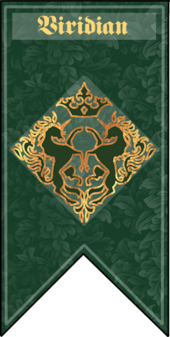
|
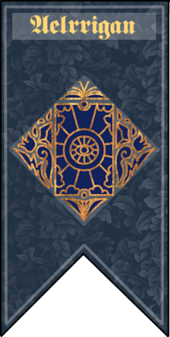
|
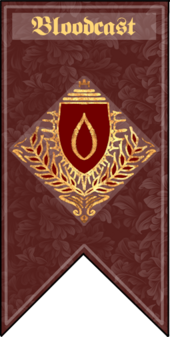
|
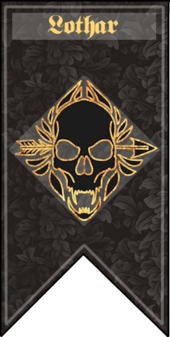
|
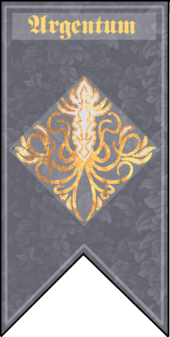
|
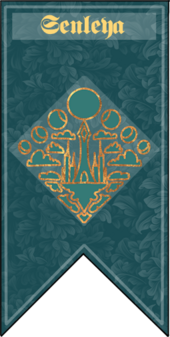
|
|---|---|---|---|---|---|
| The Viridian Order is the grandfather of all Regalian Knight Orders, popularizing the term Knight, and holding the other Orders to a high standard of Honor. | The Aelrrigan Order is an Order of Knights and Mages who seek to both protect and regulate the Mage population to avert doom in the world from Prophecy. | The Bloodcast Order rose from instability in the Viridian Order, turning away from the wealthy and protecting the poor as the essential Hedge Knights. | The Lothar Order exists as an anti-Magic and anti-Occult radical Knight Order ostensibly to hunt Vampires, but to extend that destruction to all Occult. | The Argentum Order is a coalition of anti-Regalian factions who want to bring about the downfall of the Empire, functioning like Traitor Knights. | The Senleya Order is an all-Elven Order from outside the Regalian Empire, loosely cooperating to help protect the world from tyranny. |
Privileges and Limitations
All Knights gain certain social privileges, as well as Knighthood expectations. The expectations form through a code of conduct which requires Knights to react a certain way to some roleplay scenes, or to avoid doing a particular thing. Privileges are unique things that Knights are allowed to do that no other type of Character can do (though some overlap may exist with for example Noble House Guards). Each Knight Order is subject to the so-called "Common Knight Code", while each Order also has a separate code of conduct called the "Internal Code". Failing to live up to these Codes can result in an investigation, demotion, and in the worst case scenario, expulsion from the Order. Some Orders, like the Lothar, are exceptionally sour towards traitors, and may issue a hit-squad to take out anyone who abandons their duties. First follows the Common Knights Code. The Argentum Order, uniquely, has no Code and no Privileges. For more information, refer to the Argentum Order page.
Common Knights Code
- All Knights must be loyal to the Emperor of Regalia above all, and loyal to the Regalian State. This does not mean they have to be loyal to all leaders, as sometimes, the Empire must be protected from its own agents.
- All Knights are disallowed from attacking unarmed or defenseless people. That being said, if someone intentionally throws their weapon, or turns their back to taunt, this obviously does not apply as it is tactics.
- All Knights may not act in any way to defame, degrade, or humiliate their Order, or engage in any actions that would bring shame on them or their fellows, or show weakness in the face of adversity, or combat.
- All Knights are allowed to enforce Regalian Law, but do not have to if they opt out. They must however abide by Regalian Law, though sometimes the Law can be bent, doing only what any might think the Emperor forgives.
- All Knights may not lie, deceive, or cheat in any activity in public or private. That being said, not all truths need always be said, and not all questions need to be answered if it is not honorable or virtuous to do so.
- All Knights are expected to give alms to the poor, and to protect the weak, while obeying their own Internal Code, and the purpose of their Knighthood. Inactivity and sloth to duty is considered a personal failing.
Common Knight Privileges
- All Knights are permitted to wear armor and weapons anywhere in Regalia, including Temples and burial sites and private homes, with the exception of the Imperial Palace, where Armor and Weapons must be confiscated.
- All Knights should be treated as aristocracy even if they are not. Knights can be addressed as Ser, Sera, or Dame, depending on choice of identification. They also gain a stipend for Knighthood.
Rank Up Privileges
Additional Privileges can be gained from Ranking Up. Each Knight Order has 5 ranks. The default is Rank-Knight, and from there in increasing order they are Knight-Sergeant, Knight-Captain, Knight-Major, and Paladin. Argentum and Senleya Knights do not have Ranks. Rank-Up criteria are determined as follows:
- The first Rank-Up (to Knight-Sergeant) is granted after a Month of consistent activity without Lore-breaking after Character creation or the time of joining the Order.
- The second Rank-Up (to Knight-Captain) is granted if the Character fully portrays the entire Code of their Order and enforces it uniformly in all situations.
- The third Rank-Up (to Knight-Major) is granted if the Player regularly generates independent Lore-Canon Event and Story content for their Order as a Player DM.
- The fourth Rank-Up (to Paladin) is granted if the Character achieves a notable Policy victory for the Order that is reflected in Lore, such as significant political defeat of a rival Order.
For every Rank-Up, the Player may choose one of the following Privileges for their Character:
- Privilege 1 grants the Knight Character a rent-free Estate that is about the size of 2x Rental Houses that World Staff will do interior for, if it is requested.
- Privilege 2 grants the Knight Character a personal/family crypt either in a graveyard or in the countryside roads which can be used as a secret base or lair.
- Privilege 3 grants the Knight the Ability to consult their Order's personal archives which may contain deep-lore or useful information to ongoing activities.
- Privilege 4 grants the Knight the right to request a personal Artifact designed for their Character which cannot be taken from them (unlike normal Artifacts).
- Privilege 5 grants the Knight protection against trouble for breaking certain laws, notably all of Low Law, and allows them to cast Magic freely without restrictions.
- Privilege 6 grants the Knight the ability to self-generate 1 Divinium or 1 Artifactspark per month that does not stack up and does not carry over into other months.
Transferring Knight Order
Transferring Knight Order is a somewhat controversial subject for Knights, but one that can actually occur for variety of reasons. Historically speaking, many Viridians who have grown disillusioned with their Knight Order, abandoned the Viridian Green and took up the Bloodcast Red, to become Hedge Knights instead. It should be noted that not all Orders accept transfers, and that such a decision should not be chosen lightly, as it cannot be reverted in short order. Knights may also not transfer between Orders constantly, and should aim for no more than 2 Transfers in total. Transferring can be done by submitting a Lore Staff ticket and treating it as an In Character request for a transfer in a letter, thus citing all the reasons for the transfer. Any Ranks acquired from previous Orders will be reset, but the privileges gained will not be lost. Below is a list of all Orders and their transfer opportunities. Transferring Order has no direct negative consequence, like expulsion from the Order for failing to meet requirements might have, though a Character should still expect In-Character ridicule and verbal abuse from ex-colleagues.
| Viridian Order | Aelrrigan Order | Bloodcast Order | Lothar Order | Argentum Order | Senleya Order |
|---|---|---|---|---|---|
|
|
|
|
The Argentum Order does not permit Transfers to any Regalian Order, but does accept Transfers from any other Order, if these Knights would be classified as Fallen Knights who have turned to "evil". The Argentum Order in part exists specifically to seduce and or corrupt Regalian Knights to their side. |
The Senleya Order accepts Elven or Half-Elven Transfers from any Regalian Order that follow its rules for joining, but as part of transferring to the Senleya, these Knights would lose their elevated status and considerations of Knighthood within Regalian borders, since the Senleya are a foreign organization. |